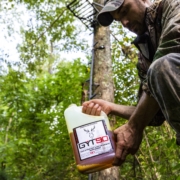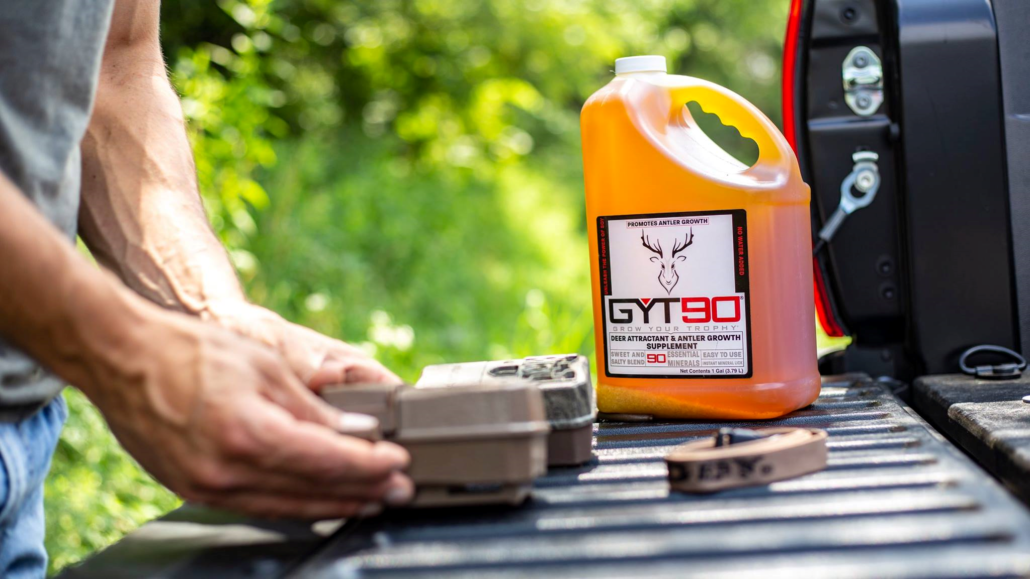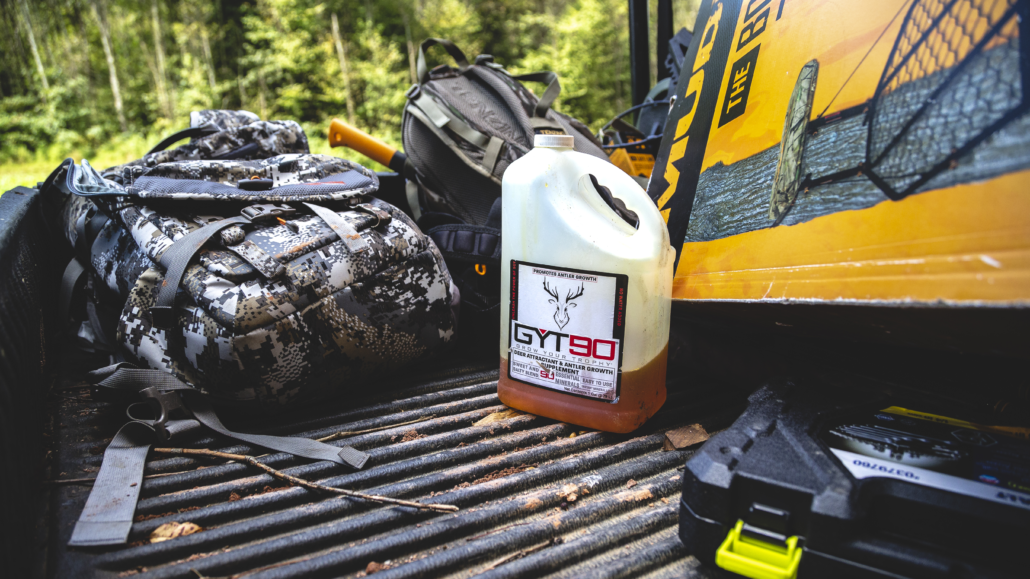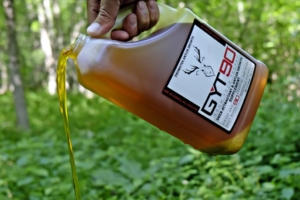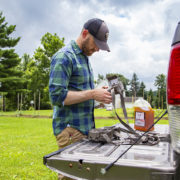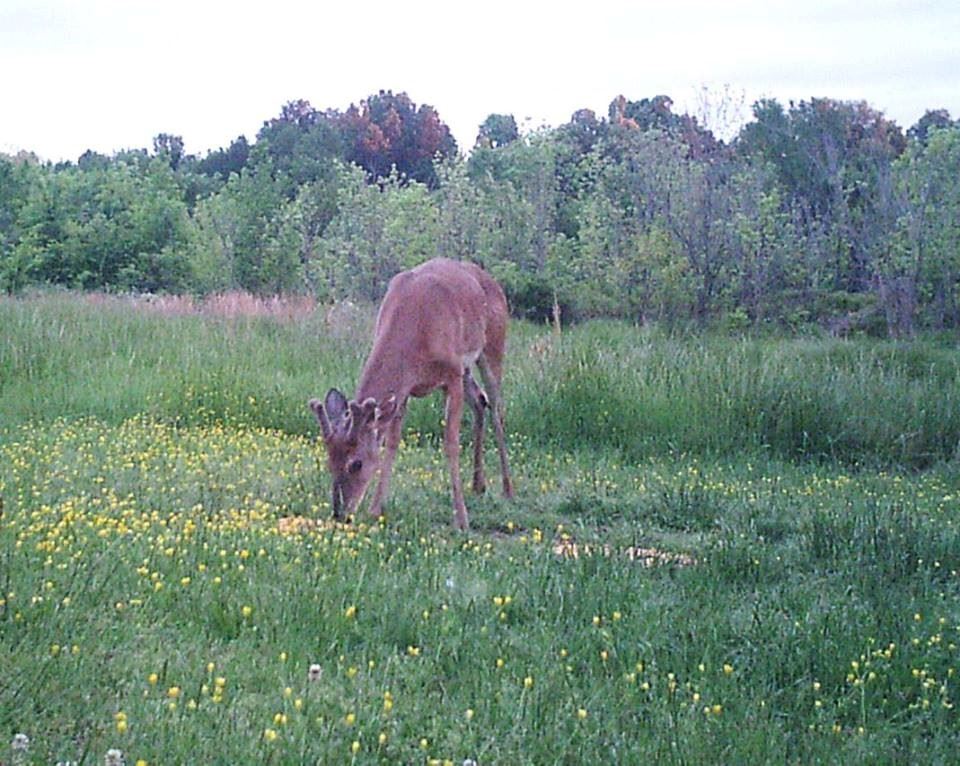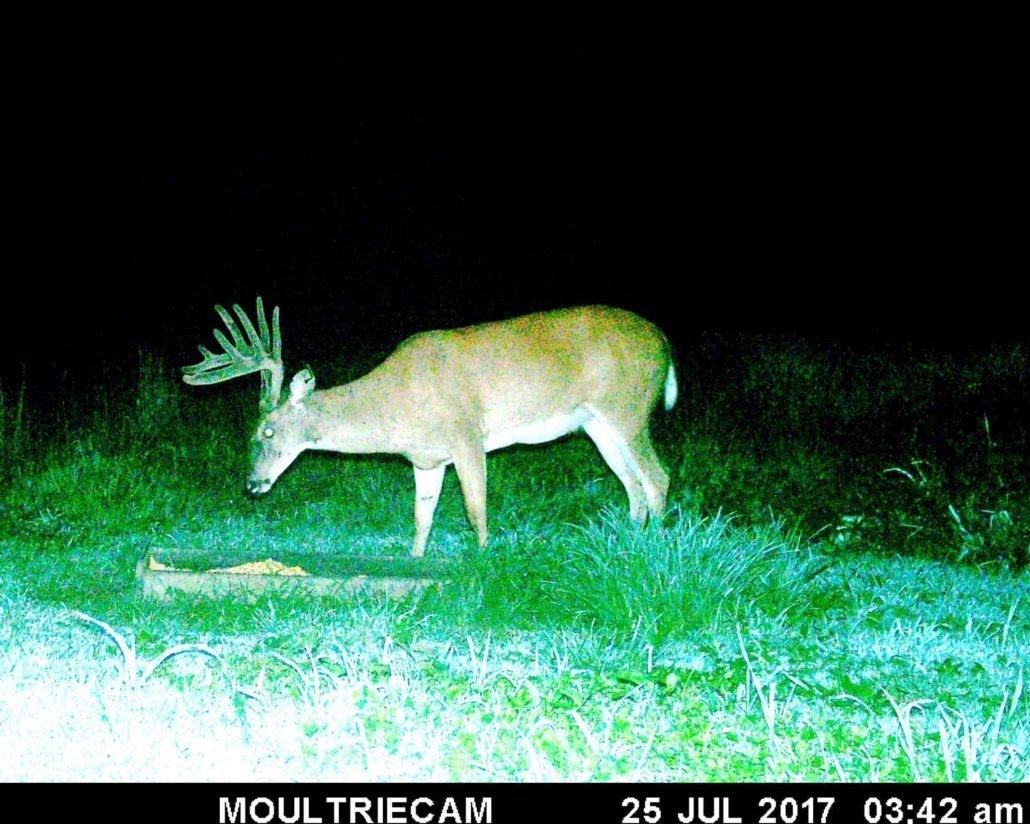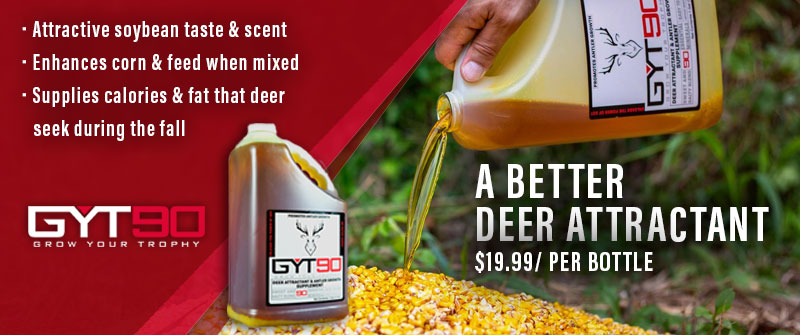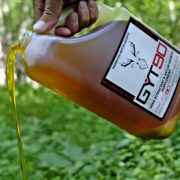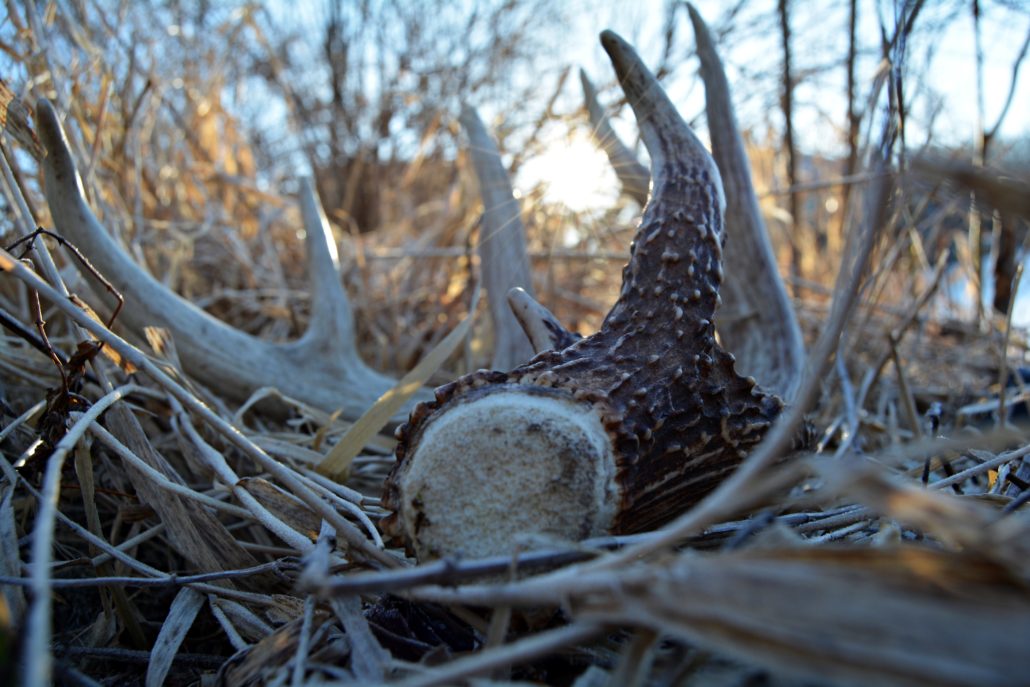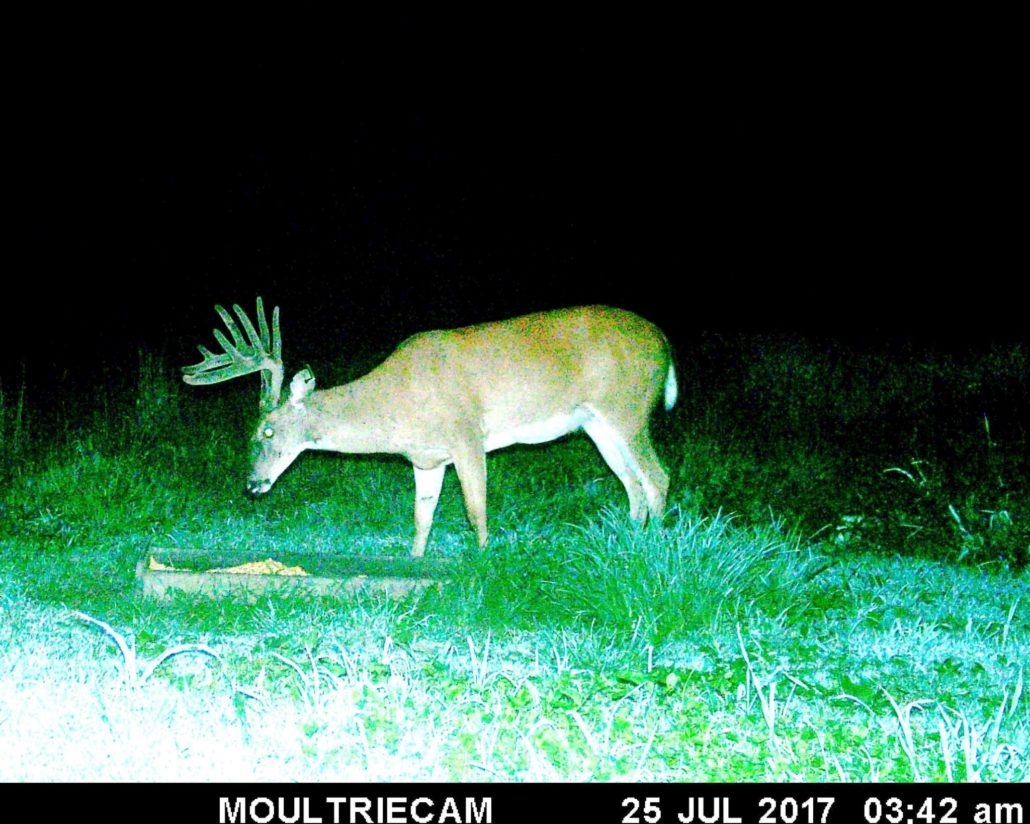Tips for Deer Hunting Over Bait and Attractants
Deer Bait and Attractants 101
It’s an exciting time of the year for many hunters as we approach the end of summer and begin to entire the cooler months of Fall. The grocery supercenters and gas stations in most suburban and rural areas start setting pallets of one of the highest selling hunting products on the market; deer bait. Suddenly, the timber and fields where we hunt are deposited with concentrated piles of sustenance and we have been practicing this ritual ever since we can remember. Pouring out bait to attract whitetail deer can sometimes be complicated, but it doesn’t have to be.
Hunters have been baiting, attracting, and feeding deer for decades, with the main purpose of enticing that mature buck to come into shooting range during daylight hours. In recent years, and with the wide use of trail cameras, hunters are now using bait to create feeding hubs that generate numerous quality trail camera photos of their deer herd. As we study to learn more about the nutritional biology of whitetails, it’s been discovered that the supplemental feeding of deer shows benefits if done during the off-season. Even with all the complexity and politics surrounding the world of baiting, deer feed and deer corn continues to fly off the shelves across all regions in North America. The basic principles of baiting remain unchanged, however, new products, better strategies, and advanced tactics can dramatically improve the success you might achieve when baiting and attracting deer.
What is the Best Bait for Deer?
A whitetail buck’s antlers are comprised of 22% calcium, 11% phosphorous, and the remaining balance is a mix of protein, trace minerals, and ash. When searching for a feed, attractant, or bait product, it’s important to look for these key ingredients of calcium and phosphorous on the package. By far the most popular and widely used bait for attracting whitetails is corn. Not only is deer corn highly consumed and well received by whitetails in almost every habitat across the continent, but it’s also one of the cheapest options for hunters. Corn contains several of these essential nutrients for whitetails that improve their health and ability to survive leading into winter. Baiting with corn is always a highly recommended source for whitetails and remains as one of the best product choices out there. However, hunters using corn should keep in mind that it can be enhanced.
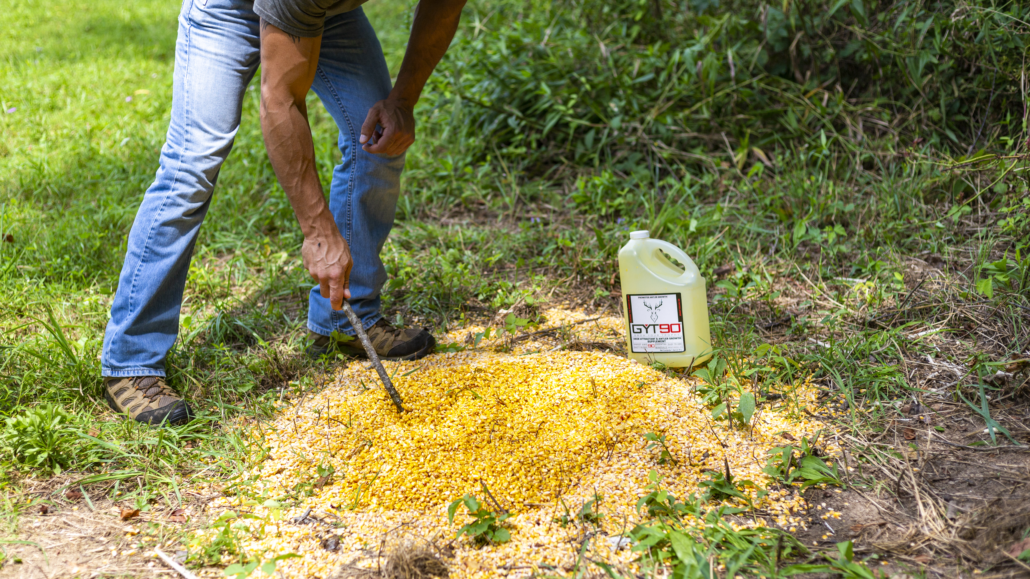
PHOTO: GYT90’s crude soybean oil content is thick enough to cover the corn kernels with a glaze and acts as an attractant enhancer from its soybean aroma. It also supplies heightened taste and an instinctual need whitetails have for the highest nutritional intake for their time feeding.
One product that is sometimes overlooked, but proves to be highly effective year in and year out, is soybeans. Since soybeans aren’t commercially sold at the same level corn is, outdoorsmen and outdoorswomen don’t seem to pursue it as much. However, if you have ever hunted over a freshly cut soybean field, or a standing soybean field in the late season you have seen the impact they have on deer. These locations can act as a free bait piles and will definitely attract several deer. Corn and soybeans contain a higher combined percentage of calcium and phosphorous than acorns, apples, alfalfa, or clover. Not to mention carbs and fats deer seek in the fall. Without soybeans being readily available, hunters will have a hard time accessing this without planting soybean food plots. Fortunately there is another option!
New deer bait and feed products surface frequently, but only a select few make an impact on everyday hunters. One such product is something that can take standard deer corn bait sites, and enhance them with the nutritional power, scent, and taste of soybeans. The soybean oil based deer mineral and feed supplement “GYT90” gives hunters the best of both worlds when mixed with a standard bag of corn. GYT90’s crude soybean oil content is thick enough to cover the corn kernels with a glaze and acts as an attractant enhancer from its soybean aroma. It also supplies heightened taste and an instinctual need whitetails have for the highest nutritional intake for their time feeding. Deer corn, enhanced with GYT90’s soybean oil based nutrition and 90+ mineral supplement means that your bait site is optimized for attracting deer. Now it’s time to discuss where to put this potent mixture.
How to use GYT 90: Corn
Posted by GYT 90 on Friday, April 13, 2018
The Best Locations for Deer Bait and Feed Sites
With the best deer bait and feed in hand you need to find the most effective locations for hunting, recon, or attracting deer. Specific bait locations can vary based on terrain, wind direction, competing food sources, use, etc. However, there is one common denominator when deciding where to place your bait site and that is its proximity to deer bedding locations.
If you are truly looking to hunt over bait, you need to understand deer movement and how deer would potentially be traveling to and from your bait site. In addition, you need to look at how you might access and hunt that compared to where the deer will already be. Several hunters will throw out bait at a location that best suits their access restrictions or feasibility. One of the biggest mistakes hunters make is placing bait in locations where deer usually won’t access during daylight shooting hours. As successful as deer bait is, at the end of the day its hard to force a deer to travel to a place they do not want to be. Frustration can quickly set in when hunting over a bait site and seeing minimal deer activity, then returning the next day to hunt that same location only to find your bait pile has been almost entirely consumed. Mature bucks may become lazy and purposely nocturnal to avoid exposing themselves in daylight.
Avoid this pitfall by placing your bait near known bedding areas. This will reduce the time it takes for deer to travel when they begin to move out of their beds towards evening feeding locations. This will generate a greater return on your investment of feed and time, and a better overall hunting experience.
Conversely, if the sole purpose of your bait site is to generate a higher quantity of trail camera photos and night time feeding is not as much of a concern, you will have more options for your bait site locations. Generating intel and surveying your deer herd is extremely valuable for in season recon, developing a hit-list, or watching survivors through the winter. The objective is to create a resource or destination point for deer that positions them directly in front of your camera. Bait sites are a fabulous tool to utilize for this activity. You do however want to avoid frequently visiting those sites to minimize intrusion. Using a product and a feeding mechanism that reduces routinely trafficking that area will increase your odds of obtaining quality trail camera pictures.
PHOTO: GYT90 is unique from other liquid attractants in that it uses an oil base instead of a water base. Water based attractants will evaporate and dissipate quicker than oil, which will result in more frequent refills to that bait site.
Deer Bait Station Types
When considering how to distribute your bait, there are several different options available. Elevated feeders, such as open trough style feeders, gravity fed feeders, and mechanized feeders all create methods to raise your bait pile up off the ground. The purpose of placing bait in elevated feeders is to minimize the consumption of non-targeted wildlife such as raccoons, squirrels, wild pigs, etc. The easiest feeders to get your hands on are simple gravity feeders, trough feeders, or more advanced deer feeders that dispense feed on the ground below at specific times.
However, you don’t need to spend tons of money on a feeder to have a productive bait site. In fact, some feeder setups may decrease mature buck usage as some deer just tend to avoid feeder sites and/or camera sites, especially with human scent in the area.
At the basic level the simplest bait site is a corn pile or mineral site for deer on the ground or on some sort of platform, usually in the form of decaying wood logs or stumps. The rotten wood in a dead log or stump is more absorbent than a freshly fallen tree and will soak in the attractant or mineral. However, minerals alone are not enough to keep deer enticed throughout the fall from their summer patterns. Mineral use decreases as deer diet changes from lush summer forage to acorns, grain, and woody browse. Read more about transitioning mineral sites to attractive hunting bait sites here.

PHOTO: GYT90 has the ability to create a bait site without the use of any additional grain or seed mixed in. A couple alternatives to the previously discussed corn mixture include simply pouring out GYT90 over a dead log, rotten stump, or directly on exposed soil. Another advantage of using the GYT90 blend is that it can be used just by clearing away some debris and uncovering the bare soil. Emptying a 1-gallon jug over a few feet of exposed ground will result in consistent heavy deer traffic at that site.
Best Trail Camera Setups Over Deer Bait and Feed Sites
For any bait, feed, hunting, or mineral site a trail camera is a must. Normally, without attraction, trying to funnel deer activity in front of your trail camera can be tricky during certain months of the year depending on the type of habitat that you are in. Minerals, supplemental feeding products, and deer attractants can all be highly desired by deer at various times on an annual basis. Most trail cameras on the market today have settings that let you adjust the picture resolution and the photo/video frequency. Reducing the picture resolution to low and extending the trigger frequency between photos will prolong your battery life and extend the time between visits to your camera. You can get away with longer picture/event durations since deer at feed/mineral sites will spend between 3-5 minutes at least feeding at or licking the site. Adjusting the settings down to that 3-5 minute mark during non-hunting months and then back to a higher frequency of photos (30 seconds- 1 minute) during hunting months. This tactic will prolong battery life, slow down the rate at which the memory cards fill up, and reduce the amount of time you spend checking the site.
PHOTO: Using a 3-in-1 product like GYT90 takes the guess-work out of it and allows you to provide all the best resources that deer seek throughout the entire year in one single bottle. More and more hunters are leaving their game cameras out all year long to monitor the herd even in the off-season.
You also want to avoid pouring your bait in an area with mature foliage and tall vegetation. A location that might be great in the Fall and Winter might not be ideal during Spring and Summer when the temperatures warm and the green-up impacts the photos being taken on your camera. The last thing you want to see when thumbing through your full SD card is 2,000 photos of grass swaying in the wind.
Hunting Setups Over Bait
Using the right bait and placing it at the right location are two key factors when hunting over bait, but hunters often overlook the 3rd crucial element that is equally as important. Stand or blind placement, down to the exact tree or site, as it relates to that bait site must be thoroughly thought out prior to choosing your location. Again, you want to understand which direction the deer typically travel from (the bedding area) in order to reach your bait site. Then you want to pinpoint their direction of travel away from the bait site (a large food source). Next, you want to account for the wind direction that will put all the odds in your favor to go undetected when hunting over that bait site. Finally, you’ll have to figure out how you plan on entering the hunting setup without blowing your wind across the bedding area, bait site, or large food source.
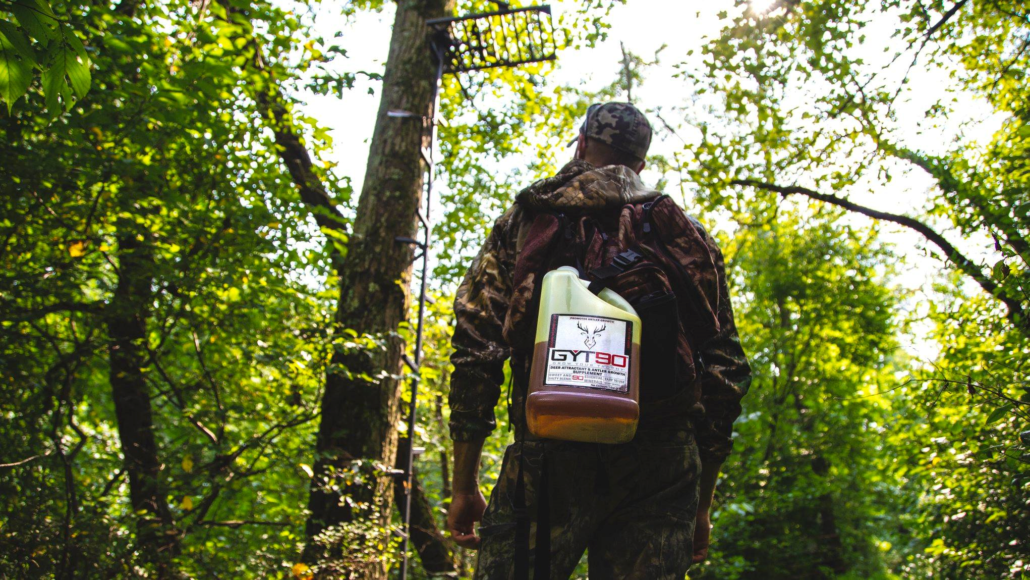
Photo: Form your hunting setup before you place the bait, considering bedding areas, deer travel, larger food sources, tree stand placement, wind direction, and access. More importantly don’t be afraid to shut down a bait site if it’s not working in your favor.
The ideal setup has the bait site in between your stand and where the deer will travel from, with the wind blowing in your face on your hike in and while hunting. Shifting winds that blow your scent over the bait pile will result in poor hunting experiences with minimal mature buck sightings. Consider your stand or blind placement and wind direction prior to creating your bait site. Try to also give yourself options. If the wind isn’t consistent or tends to swirl in that particular location, opt out of hunting it or continuing to bait the site. It’s hard to pick up a pile of corn after it has been poured, but you can seal a bait or mineral site up if you choose to relocate.
Conclusion
Baiting deer for the purposes of hunting is a long tradition that has been refined throughout time. There is a lot more thought and strategy that goes into it than just dumping out a pile of tasty treats. Baiting also has several applications that can be utilized for growing and maintaining a healthy deer herd. By understanding what nutrients to look for and which resources contain those nutrients, you can impact the overall attractiveness of your bait site. Combine that with an effective strategy when scouting and hunting around that bait location and you can maximize your hunting experience year after year!
Note: Check your state’s regulations for baiting, feeding, and attracting wildlife and deer during any time of the year and especially the regulations concerning hunting over bait.
Note: Feeding corn in the winter months, especially in large quantities to a herd that normally does not have access to that type of food source could be dangerous. Since the deer herd might not have enough of the right bacteria to digest corn it can cause acidosis and death for individuals in the herd. Do not feed corn in the winter in large amounts, and if a feed program must be started start in periodic small amounts to allow for the bacteria to adjust in a deer’s stomach.

